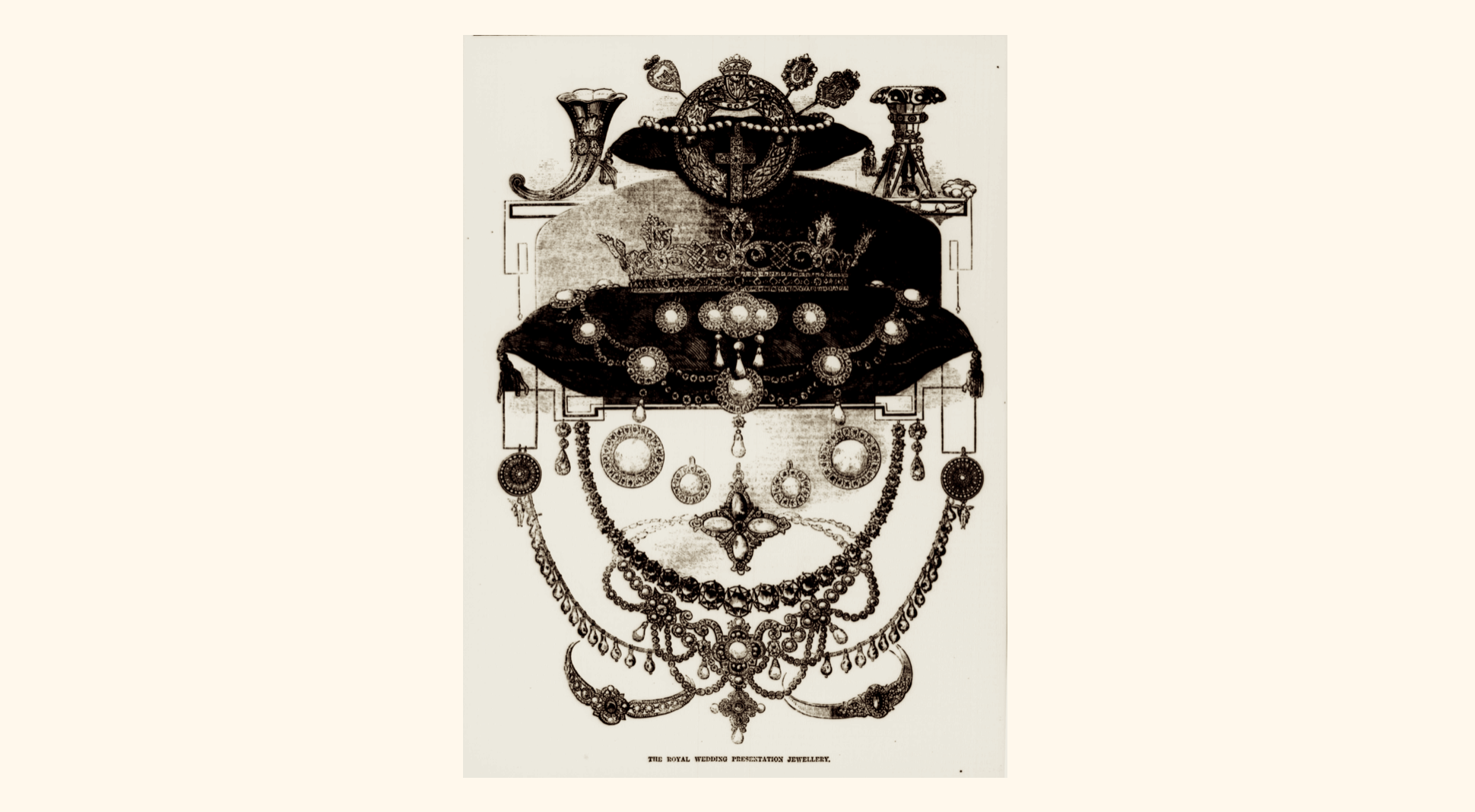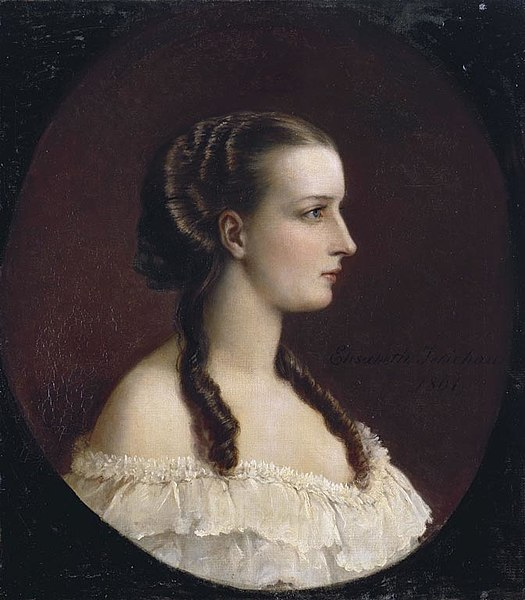One of the most striking junctures between Lady Audley’s story and the social world of the London Journal’s pages occurs within its organization alongside reports of the royal wedding of the Prince of Wales. The wedding of the Prince of Wales to the Princess Alexandra of Denmark took place on March 10, 1863, the details of which were extensively covered in the pages of the periodical. Within this multitextual and multipictorial setting, we are called to imagine “a reader who would not only read the content of the journal in varied and layered ways but also look at its images in differing and iterative installments.”1 In fifth issue of Lady Audley’s Secret, published on April 18, 1863, the London Journal included a full page image of the royal presentation jewelry, which they had already described in detail in previous issues. In fact, the first four installments of Lady Audley’s Secret, which this project reproduces, housed accompanying articles on the royal nuptials which depicted its lavishness. This time, portrayed in an engraving, the dialogue between Lady Audley’s story and the royal wedding are placed in visual conversation.
The bridging of these contents’ boundaries creates a correlation between that of Lady Audley’s attempted social ascension and the crown’s personification of the aristocratic order. Elizabeth Andermann has discussed the conversations which these two on-going subjects produced within the London Journal’s pages, saying that when seen in combination with the reports of the royal wedding, “Lady Audley stands as a reminder of the dangers of leaving one’s social class."2
As readers follow Helen Talboys to her evolution into governess, Lucy Graham, and later into Lady Audley, mistress of Audley Court, they are reminded of her disastrous attempt to ascend the social strata. The close proximity of Lady Audley’s tale to descriptions of the royal family’s wealth seek to reify of class lines and their inflexible limits. This world of excess, beauty, and extravagance, captured in the depictions of Lady Audley’s person, her dress, and, especially, her private rooms echoes that of the layered image of the royal jewels:

The atmosphere of the room was almost oppressive from the rich odours of perfumes in bottles whose gold stoppers had not been replaced…two or three handsome dresses lay in a heap on the ground, and the open doors of a wardrobe revealed the treasures within. Jewellery, ivory-backed hairbrushes, and exquisite china were scattered here and there about the apartment.3
Unlike the careful, systematic organization of the royal jewelry image, Lady Audley’s expensive possessions are strewn about half-hazard, suggesting her irresponsibility and unfit nature to wield her newfound wealth. Just as Lady Audley’s aristocratic marriage and name are revealed to be a false identity, one which Helen Talboys cannot successfully assume, the contrasting nature of the presentation of wealth from the neat and uniform royal jewels to Lady Audley’s messy handling of her own riches seeks to emphasize that this world of abundance and luxury is best left to those who were born to it.
